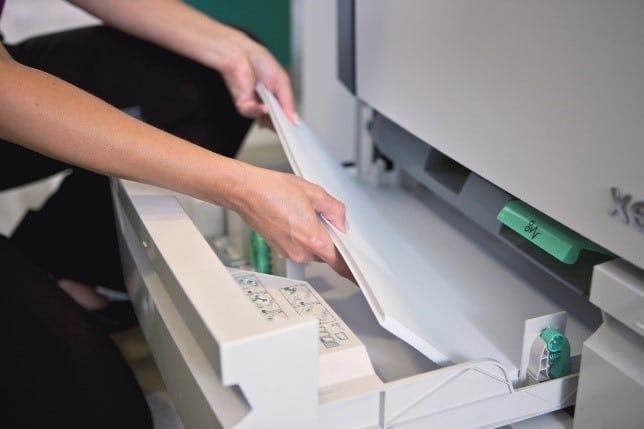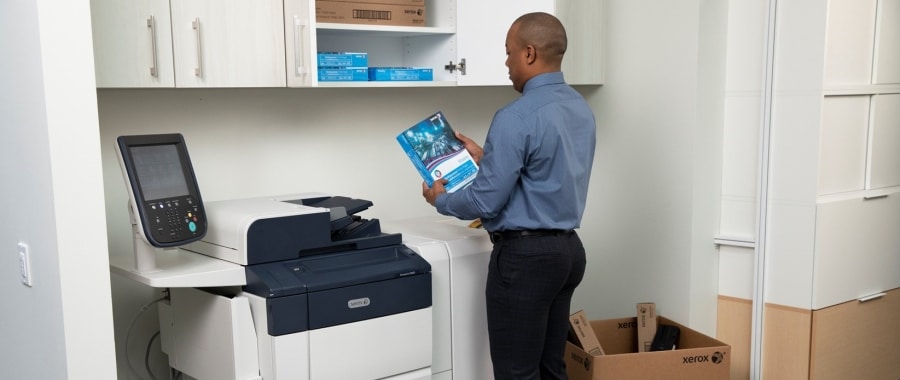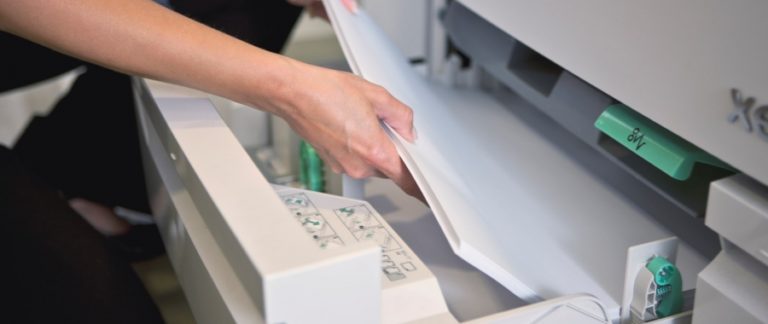With Summer approaching in most areas, humidity will soon follow. It is time to start thinking about how we store our paper and media.
Paper Storage Explained:
Paper is highly sensitive to moisture and the humidity levels within which it is stored. When paper is manufactured, most manufacturers produce paper to strict quality standards. The paper is then carefully sealed into packaging that contains a special lining for maintaining the humidity level of the paper for as long as it is properly stored. Paper shipped in this condition is perfect for Xerographic applications, but the freshness of the paper is dependent upon its storage conditions.
As a result, paper that is improperly handled or stored can be subject to excess moisture from the atmosphere, which can cause the paper to increase in size, warp, curl or stick together.
Paper Storage Issues:
- Damp paper can warp in tray – Paper that has absorbed too much moisture from the atmosphere can begin to become wavy or warp, starting around the edges of the sheet. Warped paper can result in jams, misfeeds and wrinkles during the printing process.
- Dry paper can also warp in tray – Paper that has lost too much moisture can contract around the edges of the sheet causing “tight edges”, which can lead to misfeeds, jams, registration issues as well as wrinkles.
- Damp paper can affect toner bonding to paper – Damp paper can lead to poor toner application and fusing issues, such as light/faded output or print smudging.
- Damp paper may curl or adhere to other sheets – Damp paper may curl more than normal paper would, resulting in curly paper output, or increased instances of misfeeds and paper jams. It also may stick to neighboring sheets of paper, becoming difficult to separate causing misfeeds and jams.
Paper Storage Considerations:
- Always store paper in its original packaging until ready for use – Paper is packaged in a wrapper lined with polyethylene plastic that is resistant to moisture. Unopened packages of paper should be stored inside its original cardboard carton whenever possible.
- Store paper in a storage cabinet or flat shelf – Keep unused paper in a dry, flat storage cabinet where it can be protected from physical damage and the elements. Always stack reams of paper evenly on top of one another to avoid curling or bending. Storage locations that experience extreme temperature and humidity shifts, like the floor, can increase the chances of moisture being absorbed into the paper.
- The storage location should be climate controlled – The storage location should also be kept within 68°F/20°C to 76°F/24.4°C and within 35-55% humidity levels for best results.
- Paper must be conditioned before use – If the paper cannot be stored in a climate-controlled environment, the paper must be given a conditioning period. For example, a carton of paper stored in a 57.2°F/14°C storage room, brought into a 72.5°F/22.5°C production room must be conditioned for 8 hours before use. The conditioning time will vary depending upon the temperature difference.

- Use only the amount of paper needed in the tray – When loading paper into the printer, load only the amount of paper that the job requires or that will be used in the short term. Reseal any unused paper after opening to maintain paper freshness. The packaging contains a special lining that absorbs moisture to help keep remaining paper dry.
To learn more about paper storage practices, jamming or misfeed issues for your device please go to our Support Pages .



